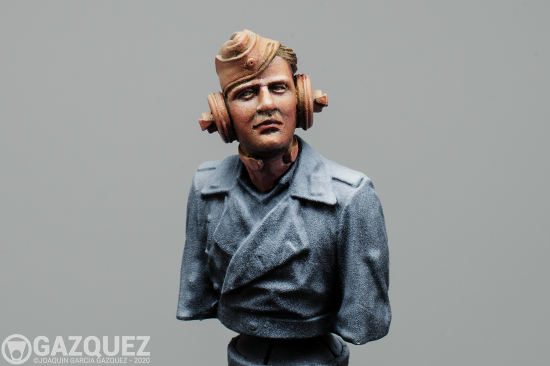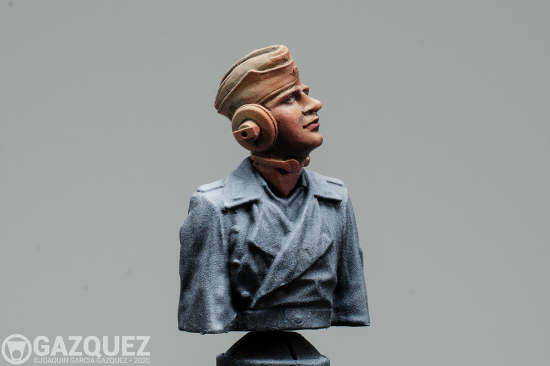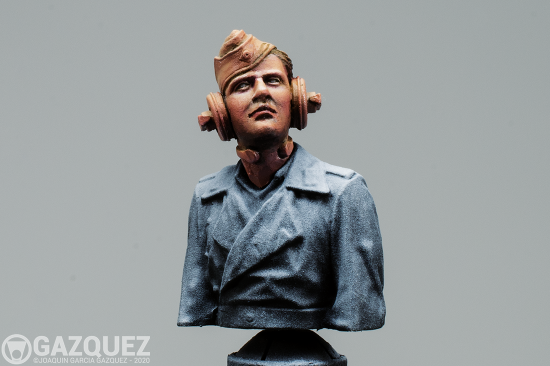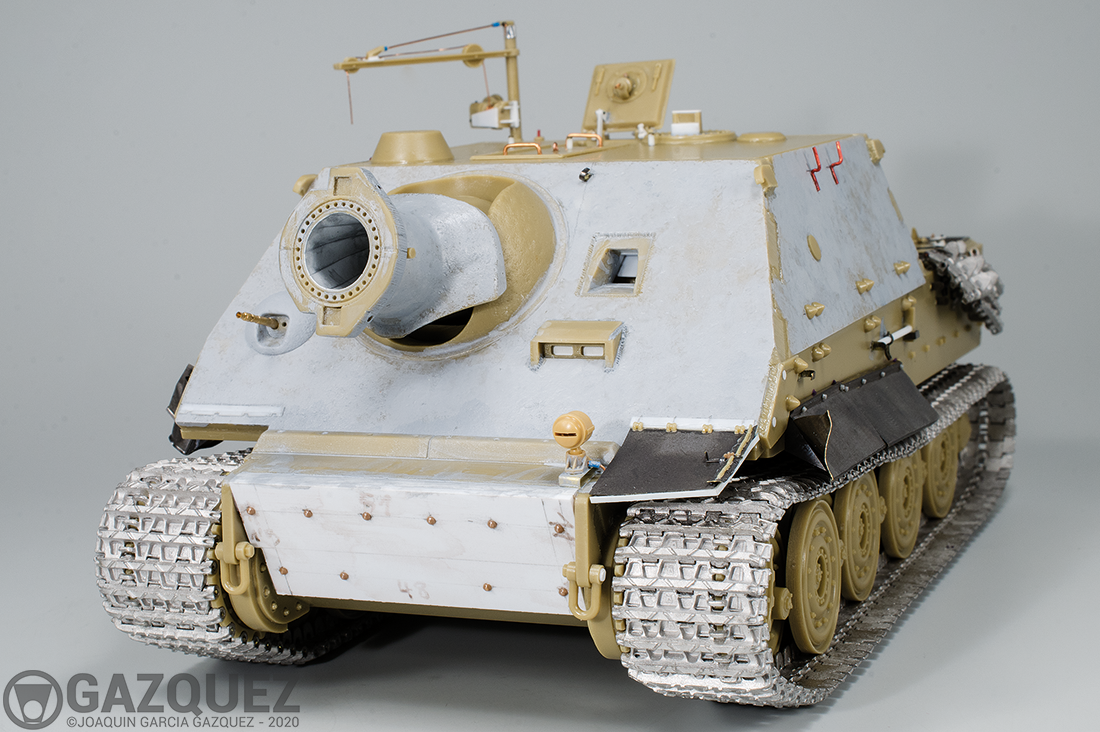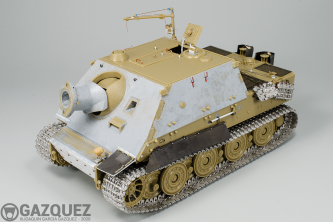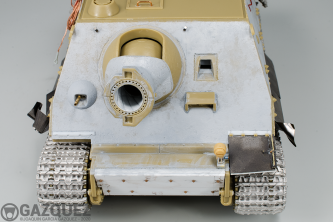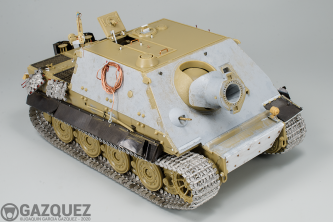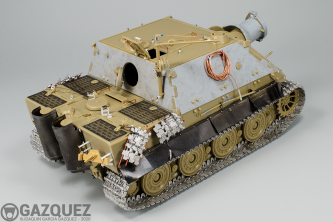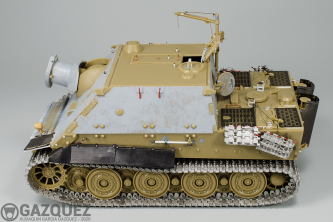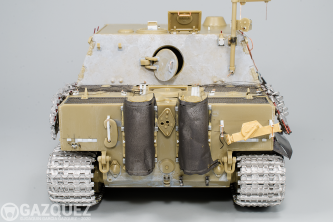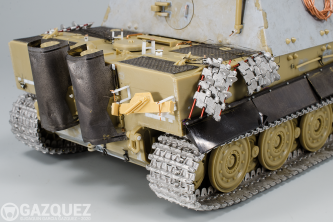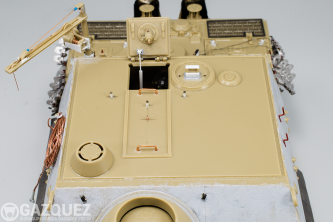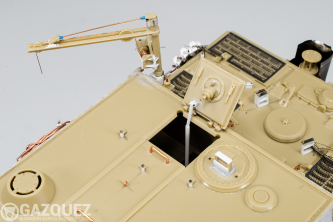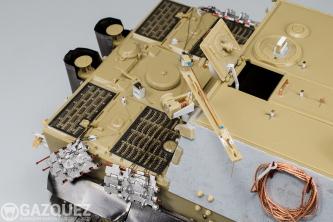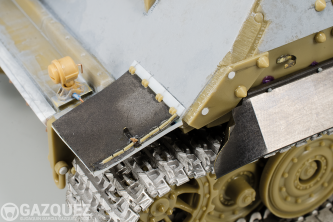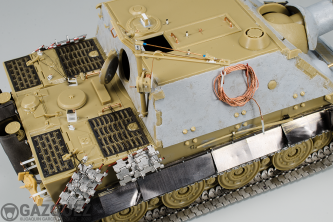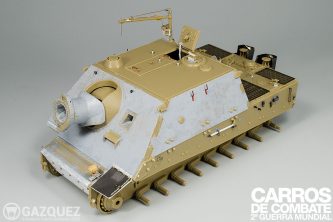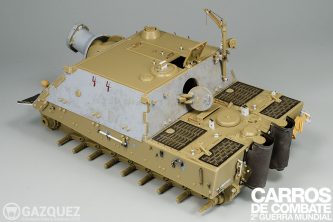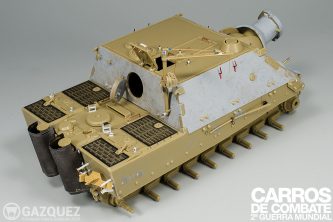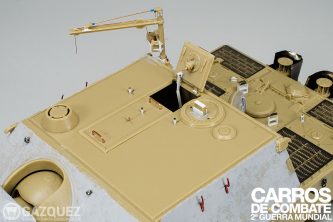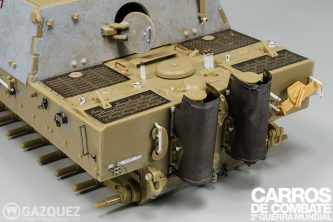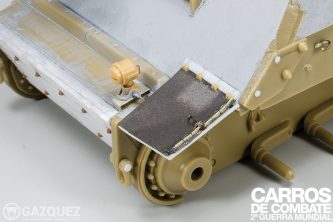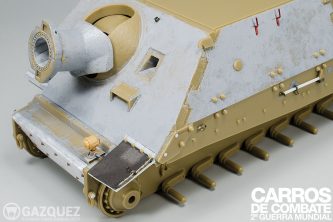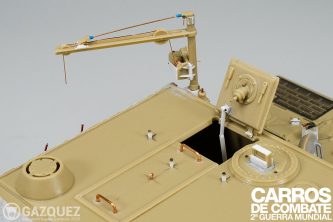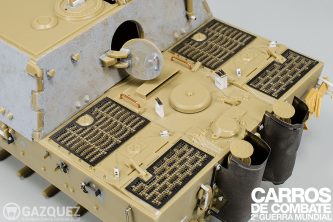En esta entrada no voy a hablar de técnica, todo eso está en el libro Figuras 2ª Guerra Mundial, creo que es más interesante comentar algunos aspectos relativos a la aproximación de la pintura de Bustos, y en particular a la del protagonista de esta entrada: Erich «Bubi» Hartmann.
(Biografía en este enlace de la Wikipedia )

Retrato de Erich Hartmann
En primer lugar decir que como es habitual en mí, la figura que pinto me tiene que “entrar por los ojos”. Al contrario, realmente me resulta difícil pintarla, ésta desde su primera hora me cautivó: el personaje, la escultura, la expresión, etc.
La propuesta de Dolman Miniatures me parece brillante y la serie de pilotos de la 2ª G.M., en mi opinión, es un acierto absoluto.

La fundición en resina es muy correcta, con un par de repasos que se hacen en muy poco tiempo la figura queda lista para imprimar y comenzar con la pintura.
Los bustos son una disciplina nueva para mí, llevo tiempo intentando pintarlos y ya llevo unos cuantos fracasados o incompletos por circunstancias varias. Este ha salido a la primera, todo ha fluido y se ha desarrollado muy bien, señal de que voy avanzando.
La escala 1/16 me sigue pareciendo mejor, pero, realmente, la 1/12, aunque la he encontrado más grande, me ha parecido abordable en mis posibilidades.
Tratamiento de la Luz
Una de las conclusiones que he llegado en la pintura de bustos es que funciona mejor una luz lateral o inclinada con la vertical, que una iluminación estrictamente cenital.
La comúnmente aplicada luz cenital con la que se pintan la mayoría de las figuras, en mi opinión y tras las experiencias en bustos, no es la más adecuada en esta disciplina. Da más juego y variedad en el tratamiento de los volúmenes una iluminación ligeramente lateral, ya que entre otras ventajas, rompe la simetría de la figura resultando una iluminación más natural, y que facilita obtener la máxima expresión de la cara, protagonista absoluta de cualquier busto.
Tras estudiar los volúmenes, inclinación de la gorra, etc., decidí que en este caso, la más adecuada era una luz con una inclinación de aproximadamente 35º-40º a la izquierda de la figura.
Eso posibilita crear un fuerte golpe de luz en la parte de la frente descubierta, que contrasta muy bien con la gorra y la visera negra, realzando el volumen de la cabeza, creando una diferenciación muy potente, realzando todos los volúmenes y a la vez quedando muy natural.

Imprimación en negro con unos golpes de blanco con aerógrafo, marcando la dirección de la iluminación señalada con las flechas. Esta sencilla actuación muestra los volúmenes, zonas de luz y sombra, facilitando enormemente el trabajo de pintura.
Rostro
Desde hace un tiempo las carnaciones las pinto fundamentalmente con acrílicos artísticos “Heavy Body” de Golden. Son acrílicos de calidad superior pensados para Bellas Artes. Convenientemente diluidas funcionan maravillosamente bien con el aerógrafo, creando unas gradaciones de color para mi insuperables, con una riqueza y viveza de tonos extraordinaria.
Pinto casi toda la cara con aerógrafo, creando mediante la técnica del cono suaves gradaciones de luz que proporcionan volumen al rostro. El pincel lo uso únicamente para los remates finales y detalles: ojos, boca, tono de color, pelo, etc.
He practicado y trabajado mucho la técnica, creo que todo este esfuerzo y estudio empieza a dar resultados.
Resto
Para paños, cueros y demás he usado principalmente acrílicos de Vallejo. Algunas referencias son lo que yo llamo “valores seguros» que garantizan un buen resultado, la mezcla del cuero es una que desarrollé hace ya bastante tiempo y que me sigue gustando mucho.
A mucha gente le ha llamado la atención el cuello de forro de pelo púrpura: pues sí, es real y era así, numerosas prendas de la época conservadas lo demuestra.

Imagen solo para discusión extraída de la Web: https://www.awm.gov.au/collection/C109227
Modelísticamente ha sido una bendición. Un tono predominantemente frío que contrasta a la perfección con la calidez de la cara, y la prenda del cuero, enmarcando compositivamente la primera, resultando en mi opinión, unas bonitas combinaciones de color.
Si os fijáis en la chaqueta, está mucho más iluminada en la parte izquierda de la figura que en la derecha. Como comentaba anteriormente, esto en bustos es conveniente hacerlo para darle más vida y naturalidad a la figura.
Y esto es todo, no quiero extenderme más, si has llegado hasta aquí enhorabuena, ha sido un buen tocho todo lo que has leído, espero al menos que te haya sido de utilidad.
Galería
Si te ha gustado este contenido, justo debajo puedes DEJAR UNA RESPUESTA, con algún comentario o sugerencia que sinceramente te agradeceré enormemente, también puedes compartirlo en redes sociales o adquirir alguno de mis libros en Gazquez Books
GRACIAS
#modelling_expands #gazquezbooks







